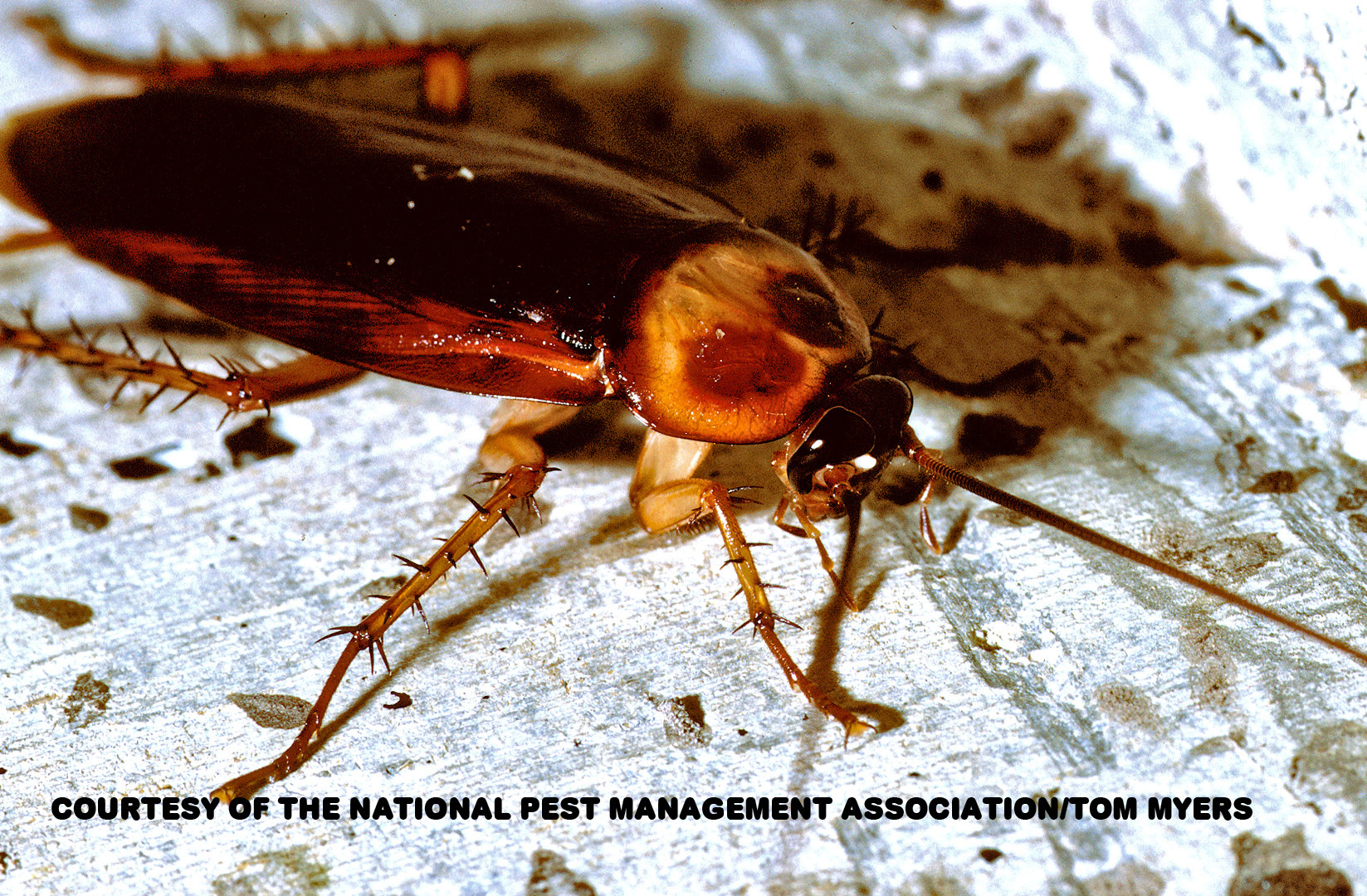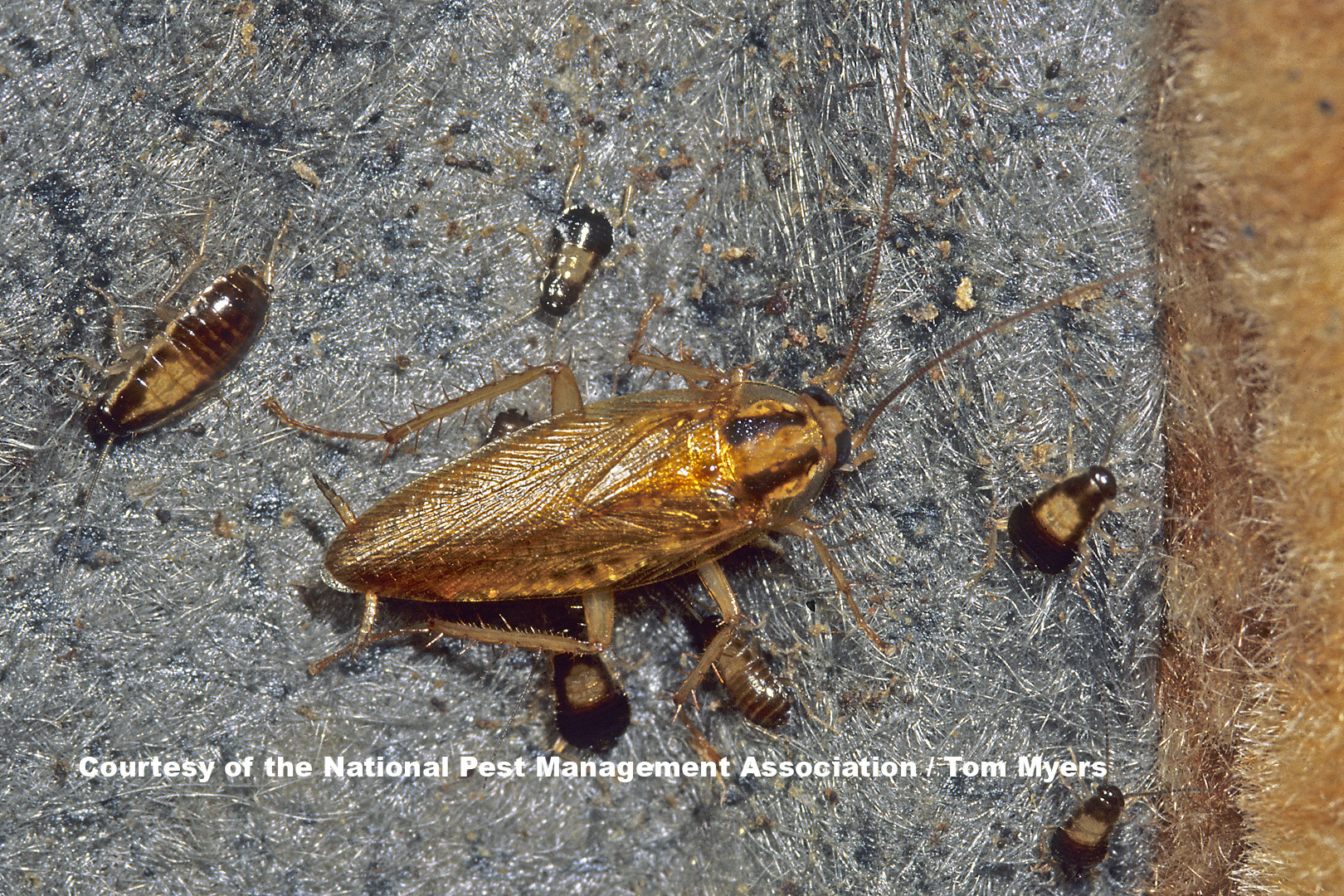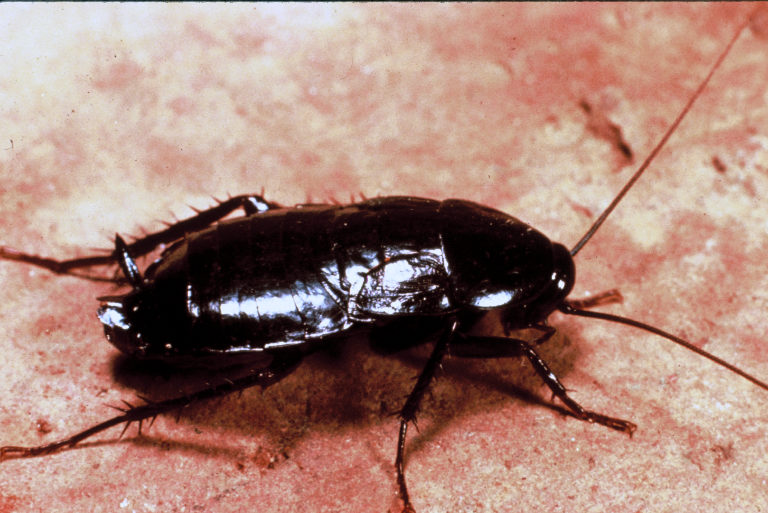Cockroaches
Did you know? A cockroach can live for up to one week without its head.

Explore Cockroaches
Cockroach Facts for Kids
- Cockroaches have been around since the time of dinosaurs!
- A cockroach can live almost a month without food.
- A cockroach can live about two weeks without water.
- Some female cockroaches only mate once and stay pregnant for life!
- A cockroach can live for up to one week without its head!
- Cockroaches can hold their breath for up to 40 minutes!
- Cockroaches can run up to 3 miles an hour.
- Insects, arachnids, reptiles, birds, amphibians, and mammals all eat cockroaches.
- Cockroaches will eat anything they can find!
- Giant burrowing cockroaches can be the size of an avocado and are one of the biggest insects in the world!
Cockroaches have been around for millions of years, evolving into some of the most adaptable pests on Earth. There are approximately 4,000 living species of cockroaches in the world. About 70 of these species are found in the United States.
Cockroaches are commonly found in buildings and homes because they prefer warm environments close to food and water. Unfortunately, cockroaches can cause allergies and trigger asthma attacks, especially in children. They can also spread nearly 33 different kinds of bacteria.
Find more facts about and information on cockroach pest control at the official NPMA website.
American Cockroaches
The American cockroach is the largest cockroach found in houses. Despite its name, the American cockroach is not native to North America, but was likely introduced via ships from Africa in the 1600s.
Females can hatch up to 150 offspring per year. Cockroaches don’t get their wings until the become adults.
- Size: 2"
- Shape: Oval
- Color: Reddish-brown, with a yellowish figure 8 pattern on the back of the head
- Legs: 6
- Wings: Yes
- Antenna: Yes
- Common Name: American cockroach
- Kingdom: Animalia
- Phylum: Arthropoda
- Class: Insecta
- Order: Dictyoptera
- Family: Blattidae
- Species: Periplaneta americana
Diet:
American cockroaches will eat just about anything, including plants and other insects.
Habitat:
American cockroaches prefer to live in warm, dark, wet areas, like sewers and basements. They often enter structures through drains and pipes.
Although American cockroaches can be found in homes, they are also common in larger commercial buildings, such as restaurants, grocery stores and hospitals.
Impact:
Cockroaches crawl through dirty areas and then walk around our homes tracking in lots of bacteria and germs. They can contaminate food by shedding their skins. Their cast off skin and waste byproducts are allergens that can trigger allergic reactions, asthma and other illnesses, especially in children.
Prevention:
- Keep cooking, eating and food storage areas clean and dry.
- If you see cockroaches, it is best to call a pest management professional due to the illnesses they can spread.
Are you a school teacher looking for more materials to share with your kids? Find additional information on American cockroaches at the official NPMA website.
Brown-banded Cockroaches
Brown banded cockroaches get their name from the two light bands they have across their dark brownish bodies. The male’s wings are larger than the female’s wings.
Brownbanded cockroaches often hide their eggs in or under furniture. They usually live 5-6 ½ months.
- Size: 1/2/"
- Shape: Oval
- Color: Brown, with light bands of color across wings
- Legs: 6
- Wings: Yes
- Antenna: Yes
- Common Name: Brown-banded cockroach
- Kingdom: Animalia
- Phylum: Arthropoda
- Class: Insecta
- Order: Dictyoptera
- Family: Blattellidae
- Species: Supella longipalpa
Diet:
Brownbanded cockroaches prefer to eat starchy foods, such as wallpaper paste and book bindings. Sometimes they’ll eat non-organic things, like nylon stockings!
Habitat:
Brownbanded cockroaches prefer warmer, drier, and higher locations than most cockroaches. While most cockroaches prefer to live in kitchens and pantries, Brownbanded cockroaches will live in any room in the house. They do not need much moisture and avoid light whenever the can.
Impact:
Cockroaches crawl through dirty areas and then walk around our homes tracking in lots of bacteria and germs. They can contaminate food by shedding their skins. Their cast off skin and waste byproducts are allergens that can trigger allergic reactions, asthma and other illnesses, especially in children.
Prevention:
- Keep cooking, eating and food storage areas clean and dry.
- If you see cockroaches, it is best to call a pest management professional due to the illnesses they can spread.
Teachers, are you looking for more instructive materials to share with your students? Find additional information on brownbanded cockroaches at the official NPMA website.
German Cockroaches
German cockroaches can be found all over the world. They are the most common cockroach in the United States. Each German cockroach can live about 100-200 days.
- Size: 1/2" to 5/8"
- Shape: Oval
- Color: Brown to dark brown
- Legs: 6
- Wings: Yes
- Antenna: Yes
- Common Name: German cockroach
- Kingdom: Animalia
- Phylum: Arthropoda
- Class: Insecta
- Order: Blattodea
- Family: Blattellidae
- Species: Blattella germanica
Diet:
Cockroaches are attracted to sweet and floury foods. They also eat non-organic items such as toothpaste and books!
Habitat:
German cockroaches live in warm and damp places, like kitchens, bathrooms, and places where people eat and drink.
Impact:
Cockroaches crawl through dirty areas and then walk around our homes tracking in lots of bacteria and germs. They can contaminate food by shedding their skins. Their cast off skin and waste byproducts are allergens that can trigger allergic reactions, asthma and other illnesses, especially in children.
Prevention:
- Keep cooking, eating and food storage areas clean and dry.
- If you see cockroaches, it is best to call a pest management professional due to the illnesses they can spread.
Teachers can find additional information on German cockroaches to share with students at the official NPMA website.
Oriental Cockroaches
Oriental Cockroaches probably get their names from trade ships but they are actually from Africa. They are large and very dark compared to other cockroaches. They usually travel through sewer pipes and drains. They prefer dirty places and cooler temperatures than other cockroaches. An Oriental cockroach creates a strong smell and is considered one of the dirtiest of all the cockroaches.
- Size: 1"
- Shape: Oval
- Color: Dark brown, almost black
- Legs: 6
- Wings: No
- Antenna: Yes
- Common Name: Oriental cockroach
- Kingdom: Animalia
- Phylum: Arthropoda
- Class: Insecta
- Order: Dictyoptera
- Family: Blattadae
- Species: Blatta orientalis
Diet:
Oriental cockroaches feed on all types of garbage and other organic material.
Habitat:
Oriental cockroaches also live in sewers and wet, decaying areas, such as basements and crawlspaces, firewood and piles of leaves.
Impact:
Cockroaches crawl through dirty areas and then walk around our homes tracking in lots of bacteria and germs. They can contaminate food by shedding their skins. Their cast off skin and waste byproducts are allergens that can trigger allergic reactions, asthma and other illnesses, especially in children.
Prevention:
- Keep your home clean and dry.
- Vacuum often and seal cracks in and around your house.
- If you see cockroaches, it is best to call a pest management professional due to the illnesses they can spread.
Find more educational materials for use in your classroom, including a profile on Oriental cockroaches, at the official NPMA website.






